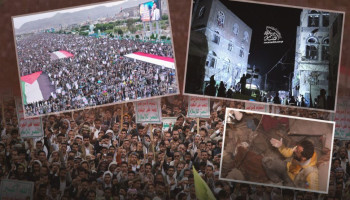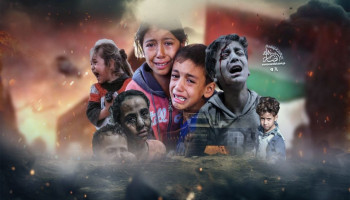As the one-year anniversary of the United Nations' ceasefire agreement passes and Yemen enters its ninth year of relentless aggression and blockade, the country remains embroiled in the world's most severe humanitarian catastrophe. It has become increasingly evident that resolving this war through military means is far more challenging than the United States and its regional proxies initially anticipated.
In a recent statement, the United Nations Population Fund (UNFPA) announced that a staggering 80% of Yemenis, or 21.6 million people, struggle to put food on their tables. The ongoing war, now approaching its eighth year, has made access to healthcare widely unavailable. The UNFPA reminds us that Yemen's crisis, amidst a protracted conflict, economic collapse, and soaring food prices, is one of the world's deepest and most entrenched humanitarian crises.
The UNFPA highlights that 5.5 million women and girls of reproductive age in Yemen have limited or no access to reproductive health services, with one woman dying every two hours from pregnancy and childbirth complications. These rates are among the highest in the region, and the statement describes the situation as "horrific" since these deaths are almost entirely preventable with adequate healthcare.
To improve access to such services, the UNFPA calls for donors to provide $70 million to deliver reproductive health services to 3.9 million people in Yemen. At the same time, the agency warns that chronic funding shortfalls endanger these vital services, potentially forcing over 90 healthcare facilities to close if funds are not secured.
These alarming figures, whether in healthcare or other sectors, reveal the extent of the UN's investment in the suffering of the Yemeni people. They also show Washington's insistence on using humanitarian aid as leverage to achieve its conditions and dictates. This impasse between war and peace will not last indefinitely, leaving the door open for potential escalation scenarios.
Yemen's authorities in Sanaa assert that lifting the ban on Sanaa airport, allowing the unrestricted flow of food and commercial goods into the Hodeidah port, and disbursing salaries to all employees from the country's revenues and resources are top priorities for breaking the deadlock and laying the foundation for any political agreement. This must be preceded by the withdrawal of invading forces from the country.
A resolution remains possible, and Omani-led efforts could yield a long-awaited breakthrough agreement, provided that the aggressor nations abandon their stubborn positions and recognize the Yemeni people's right to benefit from their wealth and resources. The anticipated prisoner exchange agreement, set to take place on the 19th of Ramadan, may spur progress in breaking through the crisis's complex and thorny issues.







